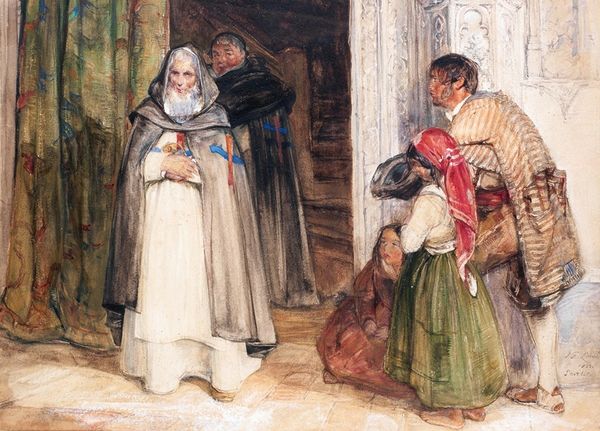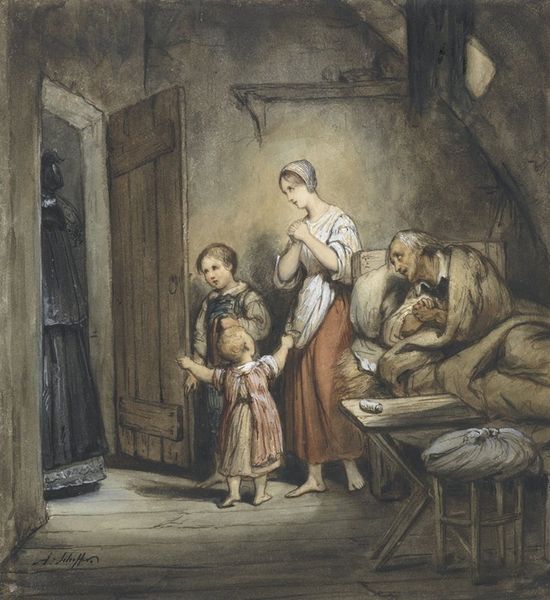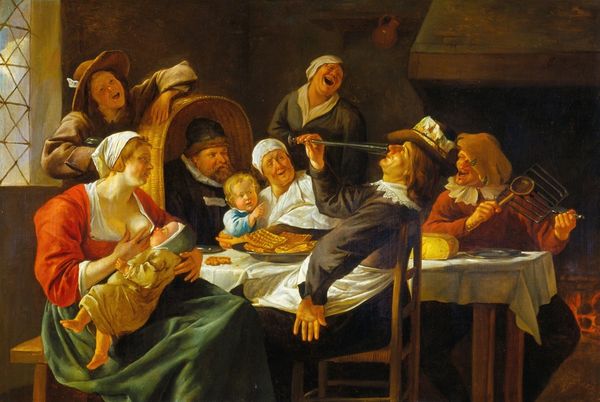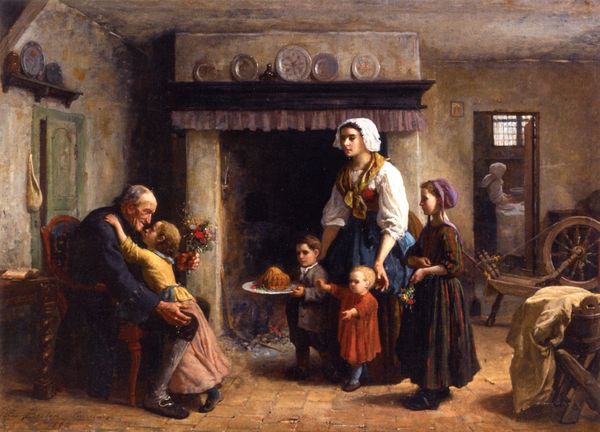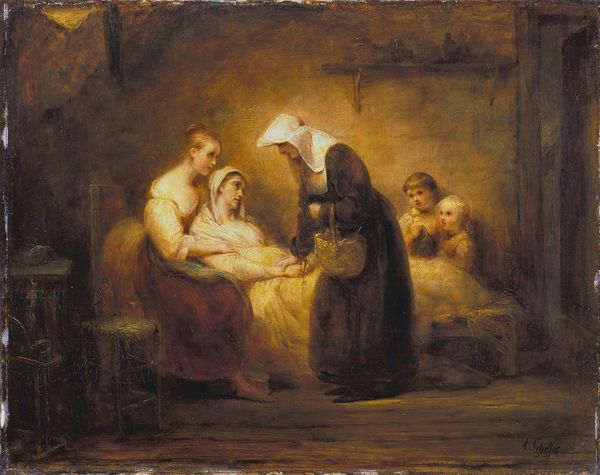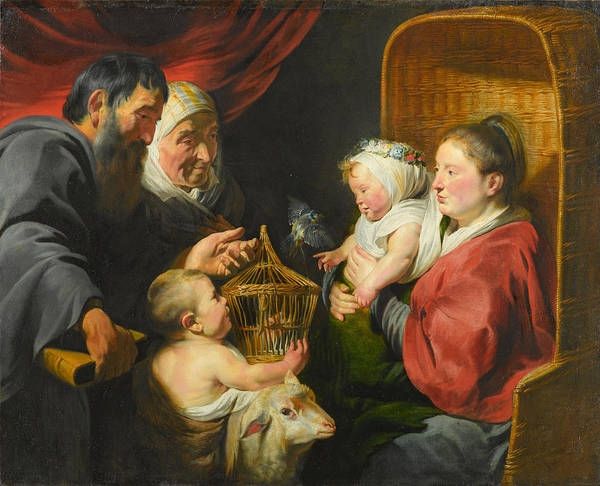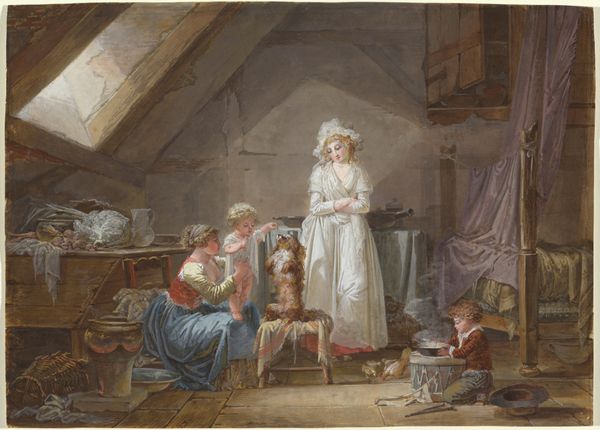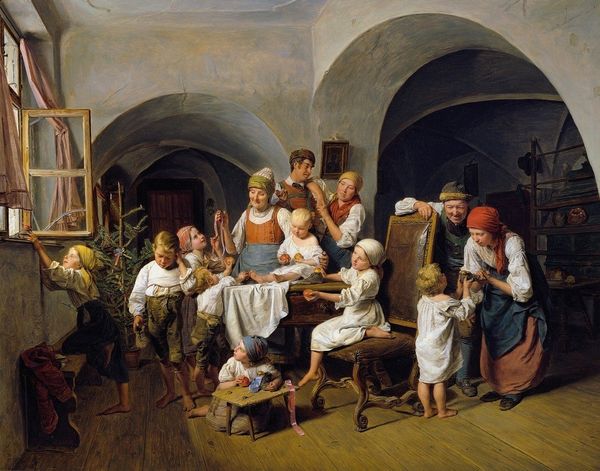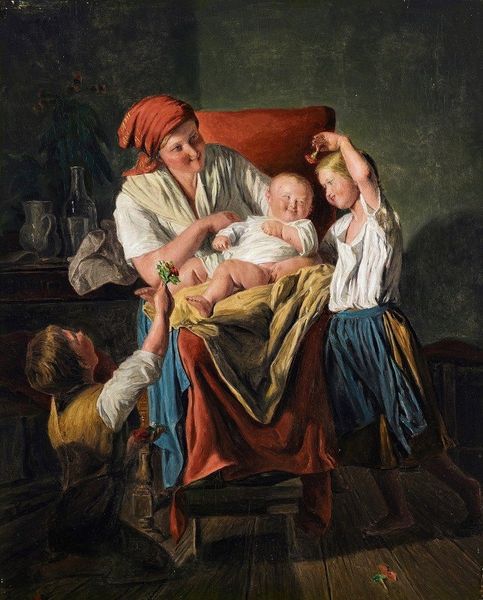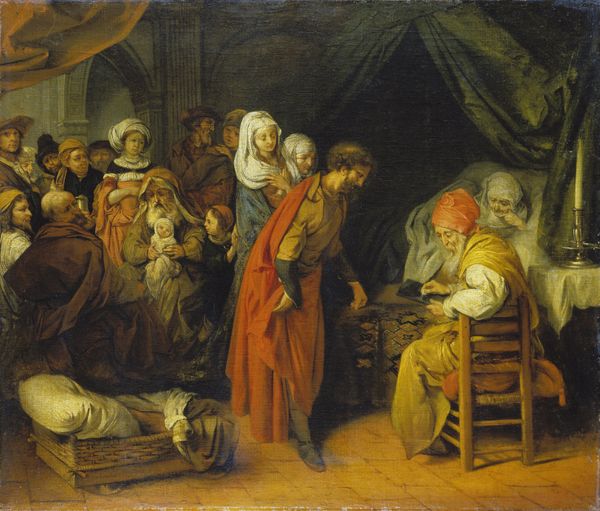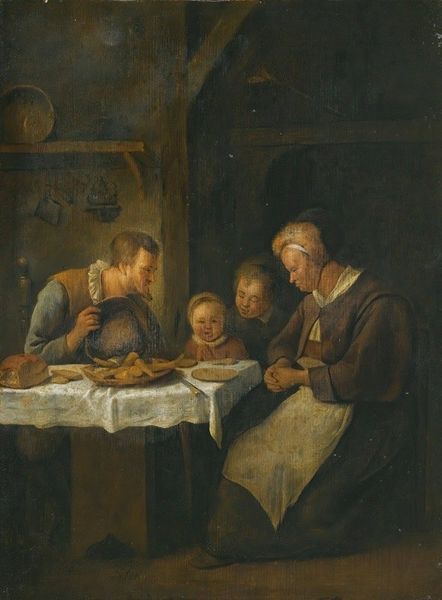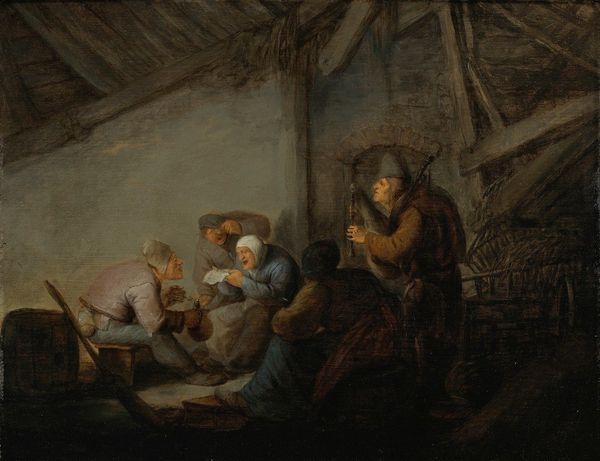
painting, oil-paint
#
portrait
#
figurative
#
painting
#
oil-paint
#
oil painting
#
genre-painting
#
history-painting
#
realism
Copyright: Public Domain: Artvee
Curator: Oh, it’s just brimming with warmth, isn’t it? Like stepping into a memory… the kind that smells of bread baking and damp wool. Editor: This is Ferdinand Georg Waldmüller’s "The Grandparents’ Visit," an oil painting created in 1863. It presents an intimate scene, rich with social implications of family life during that period. Curator: Waldmüller was so good at capturing that raw, unvarnished humanity. You can almost feel the child’s excitement leaping off the canvas! And that baby—pure, unadulterated joy in those little, grasping hands. He uses light like a gentle storyteller, focusing our attention on the emotional heart of the scene. It feels deeply authentic, but perhaps a little idealized too, doesn’t it? Editor: Waldmüller aimed to elevate genre painting, scenes of everyday life, by giving them a moral weight. The "Vormärz" era, that period before the 1848 revolutions, was marked by a longing for simpler times, a retreat to domesticity in the face of societal change. Paintings like this reinforced conservative family values but also created a burgeoning market for popular art beyond the aristocracy. This work then highlights both an important function and political environment of the day. Curator: True. It's not just about a heartwarming visit; it’s subtly promoting a certain…structure. Look at the careful positioning of each figure—it's all so deliberate. What I find most evocative is that shadow engulfing the top of the frame… it provides so much depth. The slight asymmetry gives a beautiful dynamic, doesn't it? It almost feels as though we’ve barged in! Editor: Precisely. The spatial arrangements subtly dictate roles. Consider the framing within the composition—the darker corners creating a stage for these displays of affection. And while ostensibly natural, this image would circulate within specific networks and contexts. Its message, ostensibly universal, speaks volumes about 19th century Viennese culture. Curator: Yes, exactly! A universal sentiment dressed in very particular clothes. But that's the fascinating tension, isn't it? Editor: Ultimately, art is not neutral. Looking closely, like Waldmüller wanted his audience to, lets us untangle all the lovely mess of life then, and even now. Curator: Indeed. And maybe that’s the true joy of seeing this—that beautiful jumble of then and now. It’s as touching as the scene captured.
Comments
No comments
Be the first to comment and join the conversation on the ultimate creative platform.

